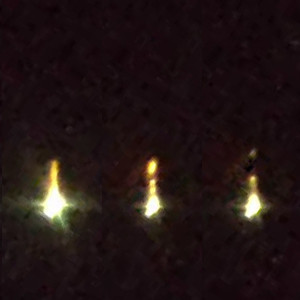In the Meteor Physics Group, we observe meteors and work on the theoretical interpretation of our observations. The primary observational system is the European Fireball Network. Sensitive video cameras are used to observe faint meteors. The observed data are used to study the physical processes that occur during the entry of meteoroids into the Earth’s atmosphere, including ablation, radiation, ionization, and fragmentation of meteoroids. We determine the physical properties and chemical composition of different types of meteoroids, their origins, and their distribution in the Solar System, as well as their relationships to comets, asteroids, and meteorites. Individual pages provide detailed information about our instruments, methods for observing meteors and fireballs, and our most significant results.
 |
European Fireball Network The European Fireball Network is the first and longest-running experiment for systematic instrumental recording of fireballs, which has been in operation since the 1960s. |
 |
Video observations of meteors What equipment do we use for video observations of meteors, and which physical properties of small meteoroids can we derive from these observations? |
 |
Meteor spectroscopy What are spectra and how are they observed in meteors and fireballs. What can we deduce from meteor spectra and how the meteor observation and data processing technique developed at the Astronomical Institute in Ondřejov. |
 |
Meteoroid fragmentation modeling How can we derive physical properties of meteoroids and how do we calculate a strewn field of meteorites. |